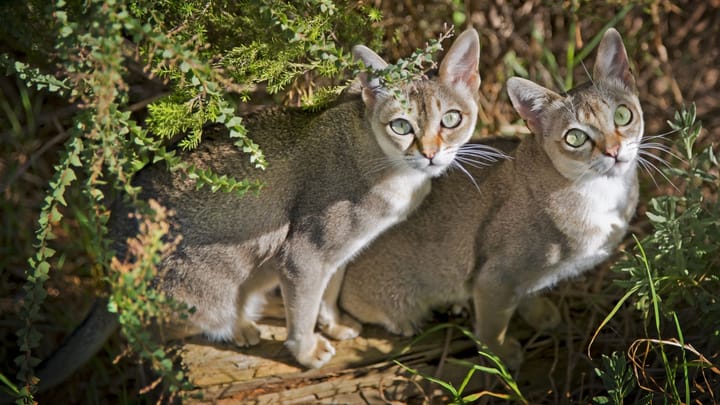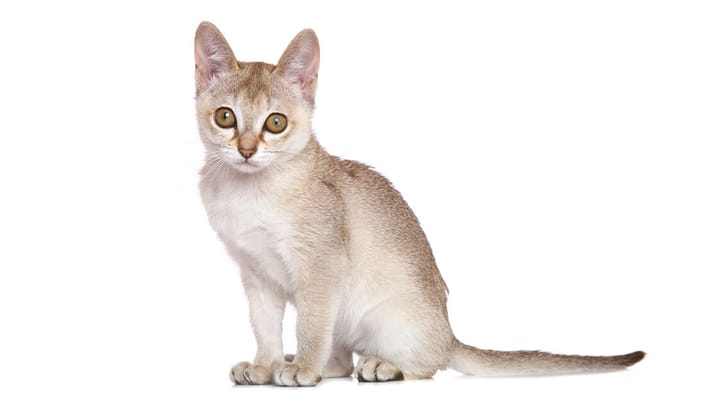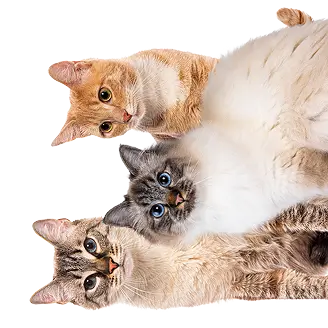Singapura


With their tiny head and round eyes, this compact kitty can leave no-one indifferent, with no heart able to resist their angelic little face. They are the smallest cat breed in the world, but make no mistake - their personality is by no means held back by their miniature size! Their ticked coat bears some resemblance to an Abyssinian’s, and with their permanent kitten-like appearance, the Singapore will win you over at first sight.
|
Life expectancy |
The Singapura has a life expectancy of between 10 and 20 years |
|
Temperament |
|
|
Adult size |
Female
Between 13 and 16 in
Male
Between 13 and 16 in
|
|
Adult weight |
Female
Between 2 and 4 lb
Male
Between 4 and 7 lb
|
|
Coat colour
Warm ivory |
Cream |
|
Type of coat
Short and trim, but longer along the spine, where the ticking is most prominent. |
Short |
|
Eye colour
Celadon green, hazel, golden or copper. Blue and aquamarine are not allowed. |
Green
Brown
|
|
Purchase price |
The Singapura costs approximately 500£ |
The tourism office of their native region has made the Singapore a national emblem. Ever since, as you’d expect, there are very strict controls on their export.
It’s also interesting to note that according to some sources, this breed could be the product of a cross between two established breeds: the Abyssinian and the Burmese. DNA analyses have shown that these cats are genetically very similar to the Burmese. That said, in 1975, they used to roam freely in the streets of Singapore, meaning they are effectively the equivalent of your everyday moggy.
More details about the Singapura
Singapura: Origins and history
These adorable felines are, as their name would suggest, originally from Singapore (which literally means “city of the Lion” in Malaysian), in Southeast Asia. There is some controversy around their origins, as they were discovered in Singapore, but developed mainly in the United States.
In 1970, the Meadows, American breeders of Siamese and Burmese cats, brought back some adorable ivory-ticked cats from their travels. Then in 1971, Hal Meadow returned to Southeast Asia for work and began exporting more cats back to his partner, who had stayed in the United States, and began to breed them. In 1974, the Meadows moved to Singapore with their furry companions, two of which were actually the offspring of the cats Hal had exported in 1971. Finally, in 1975, the couple went back to the United States with 5 Singapore cats and established a breeding programme with the consultation of British geneticists. In 1987, a breeder called Gerry Mayes made a trip to Singapore to look for other cats of this breed, which he brought back to the US and then registered with TICA.
Physical characteristics of the Singapura
Despite being the world’s smallest breed, Singapores are sturdy cats with excellent musculature, meaning they’re quite capable of doing all the same things as other cats. Granted, they are extremely little, but they are robust and powerful, which might surprise those who are quick to judge their appearance.
Singapura: Characteristics
Singapura: Behaviour
Breed compatibility Singapura
Singapura: Purchase price
The average purchase price of a Singapore kitten is approximately £500, with this figure varying depending on their lineage, breeding, age and even sex. For your monthly budget, you should allow about £20 per month to meet your cat’s needs by providing them with a good quality of food and ensuring they stay in good health.
Singapura: Shedding
Light
These little felines shed very little. So they’ll certainly please anyone not wanting to have to clean up after their pet too often!
Singapura: Grooming
Singapores require very little grooming. We recommend a weekly brush using a rubber brush, which helps remove dead hairs.
Singapura: Health
The life expectancy of a Singapore is between 10 and 20 years, with an average of about 15.
Because of their short, cropped fur, these little felines are not well equipped to deal with cold temperatures. This means you’ll need to keep them inside when the temperature drops in autumn and winter.
They are not known for being greedy. However, it’s still advisable to seek your vet’s advice on the right feeding portions for your cat in order to prevent them from putting on more weight than they need.
So far this breed hasn’t shown a particular predisposition to any disease. However, they can suffer from Pyruvate Kinase deficiency (PKDef) so screening is recommended. Pyruvate Kinase is an enzyme involved in the metabolic process of breaking down sugars in erythrocytes. When the cat lacks this PK enzyme, erythrocytes die, causing anaemia and the symptoms that come with it. Singapores may also develop the same conditions as other cats, such as oral diseases.
No pairings with other breeds are authorised.







